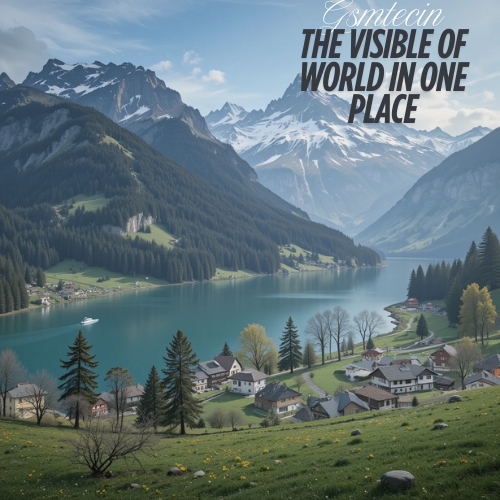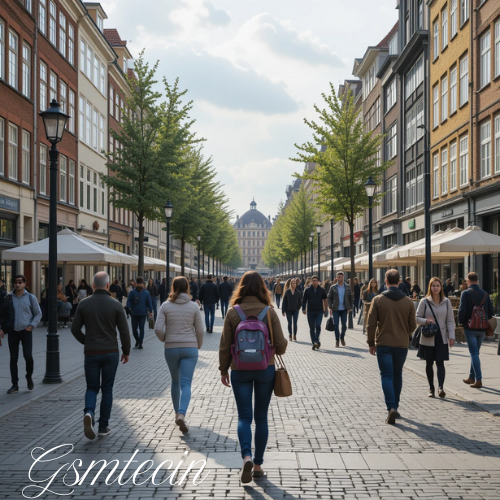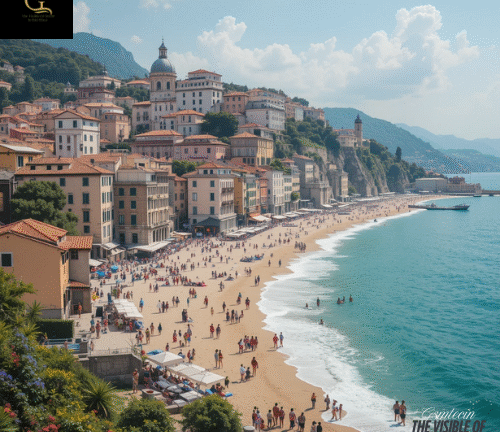Europe’s Overtourism Horror: What Will Happen Next?
Europe’s long-standing appeal as a world vacation destination has turned into a liability. The continent, which was formerly praised for its rich history, culture, and accessibility, is currently dealing with the unexpected effects of excessive tourism, or “overtourism.” Residents are becoming increasingly frustrated, the environment is deteriorating, and there is a growing desire for change as a result of the increase in tourists, shifting travel habits, and digital travel trends.
Growing Overtourism-Related Pressures
Over 700 million foreign visitors visited Europe in 2023 alone, with tens of millions of visitors visiting popular destinations like France, Spain, and Italy. Nowadays, cities like Venice, Barcelona, and Amsterdam are dealing with the physical and social effects of tourism, since tourists frequently outnumber locals. Travel is now easier than ever because to factors like low-cost airlines, cruise tourism, and short-term rentals, but it comes at a high cost to residents.
Public dissatisfaction is now pervasive. Protests against tourism in Barcelona have demanded stricter rental laws and limitations on cruise ships. While Amsterdam is pushing down on boisterous tourists and has frozen new hotels, Venice implemented an entry fee in 2024 to discourage day-trippers.
Degradation of the Environment and Stress on Infrastructure
Overtourism has serious negative effects on the environment in addition to its social effects. Foot traffic, garbage, and carbon emissions are destroying fragile ecosystems in the Greek islands, the Alps, and historic towns. In addition to bringing thousands of passengers at once, cruise ships frequently make minimal economic contributions and release pollutants into harbours.
Pop culture tourism has forced cities like Dubrovnik to restrict access to ancient sites and set a limitation on the number of cruise ships. Even though the Swiss Alps are not the most visited area overall, there are still issues in charming places like Lake Brienz and Lauterbrunnen where “Instagram tourism” has resulted in crowding and a shallow understanding of the local way of life.
Governmental Reaction and Community-Based Initiatives
Protests in public are growing in number and organisation. Mass protests against the effects of mass tourism on housing, infrastructure, and the environment took place in 2025 in Spain’s Canary Islands. This summer, more demonstrations are anticipated throughout southern Europe, expressing a long-standing sense of annoyance and a call for structural reform.
Though slowly, governments and tourism boards are reacting. To solve the issue, both national and local policies are being developed. These include encouraging off-season travel, investing in lesser-known locations, and imposing restrictions on the number of visitors each day as well as tightening regulations on short-term rentals.
Creative Methods for Sustainable Travel
A number of European locations are setting the standard for innovative approaches to balancing tourism, sustainability, and the welfare of locals:
Switzerland: Using Swisstainable for Greener Travel

With a focus on low-emission travel and public transport, Switzerland has started its Swisstainable campaign. Today, hydroelectricity powers the whole nation’s train system. When visitors reserve certified sustainable lodging, they can receive discounts on public transportation. Extended ski lift operations and seasonal hotel expansions are also contributing to the growth of year-round tourism.
A CHF5 tourism tax is now levied in popular locations like Lauterbrunnen, and the money raised goes towards enhancing the infrastructure there. The goal of new parking lots and train connections is to lessen traffic while better controlling the flow of tourists.
Spain: Data-Driven Policy and Intelligent Travel Destinations

Smart technology is being used by Spain, one of the most visited countries in the world, to combat overtourism. Beach density, air quality, weather, and even the number of jellyfish are all tracked by a new digital platform. Local tourism bureaus and motels use this data to inform visitors’ decisions in real time.
In an effort to spread crowds, Spain has also eliminated more than 66,000 unlawful short-term rentals and is promoting lesser-known areas. In places like the Balearics, tourist taxes are now reduced for longer stays, rewarding travellers who interact with their location more deeply.
Berlin: Promoting Conscientious Travel

Berlin is creating incentive-based tourism, following Copenhagen’s example. Visitors who participate in sustainable activities like trash collection or tree planting could receive benefits under the future initiative, such as free tours or discounts to attractions.
Through its “15-minute city” concept, Berlin is also promoting eco-friendly lodging, local retail, and car-free travel, encouraging visitors to explore places on foot or by bicycle and to stay in walkable zones that meet all of their travel needs.
The Boundaries of Local Remedies
Air travel and cruise tourism are two of the key causes of overtourism that have not been addressed, despite local improvements. Both are difficult to control at the local level, and even the most well-thought-out tourism plans are nonetheless challenged by their emissions, unexpected visitor surges, and infrastructure load.
Experts caution that the overtourism issue may continue unless more comprehensive, potentially global controls are implemented, such as restrictions on air and ship arrivals.
Towards a Novel Travel Philosophy
There is no doubt that Europe’s uncontrolled mass tourism era is coming to an end. A more sustainable model—one that prioritises quality over quantity, values local life, and reduces environmental harm—is starting to take hold in cities, nations, and communities.
Additionally, travellers are growing more conscious. Growing interest in mindful tourism—which favours off-season travel, longer stays, public transportation, and genuine interaction with local culture—has been spurred by headlines about protests and crowding.
Europe is at a turning point as anti-tourist demonstrations are expected to recur this summer. A more balanced, egalitarian, and sustainable future for European tourism is still achievable with a combination of grassroots organising, astute policy, and responsible travel. The tourist nightmare won’t go away overnight.




